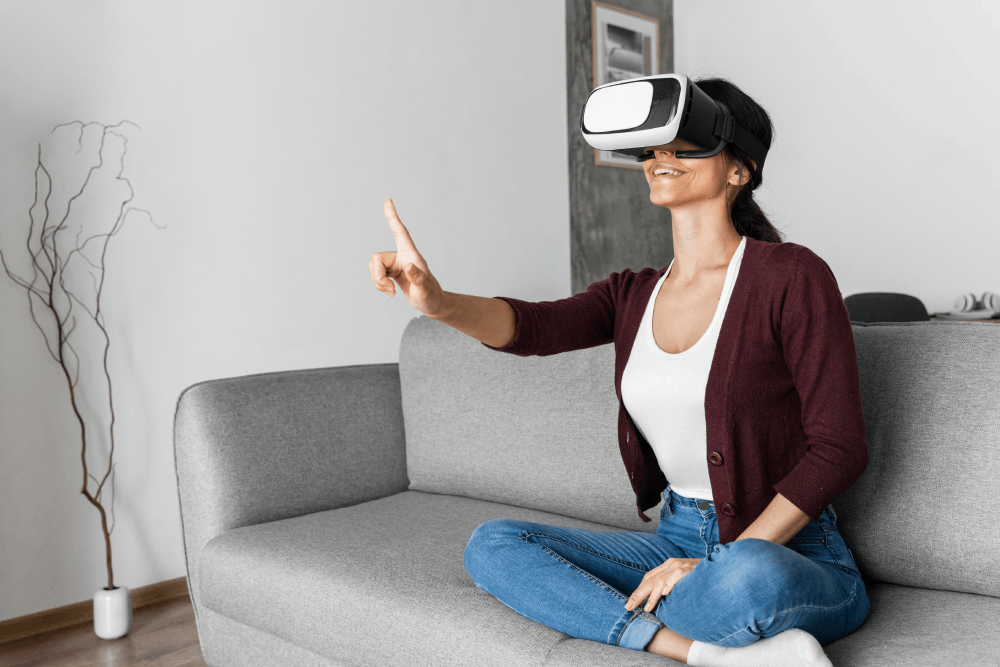
Modern life often feels like a delicate dance between screens and face-to-face moments. Navigating the mix of in-person connections and online relationships requires careful attention to well-being and social fulfillment. As technology and digital tools use becomes increasingly widespread, maintaining meaningful relationships can present new challenges. Many seek best practices for balancing these two worlds while staying focused on what truly matters.
What defines real-life and virtual relationships?
Understanding the differences between real-life relationships and their online counterparts offers valuable context. Both play essential roles in shaping daily experiences, yet each brings distinct strengths and challenges.
Real-life relationships are characterized by shared physical space, eye contact, body language, and subtle emotional cues. These interactions naturally build trust, empathy, and deeper understanding. In contrast, virtual relationships depend on digital platforms—such as social media, messaging, or video chat—and often transcend geographic boundaries. Each approach provides unique opportunities for establishing meaningful or fulfilling connections.
Why do people gravitate toward virtual relationships?
The desire to connect online is nearly universal. For many, reaching out virtually helps bridge gaps created by busy schedules or distance. Others embrace digital spaces to explore new perspectives or friendships that may not be available locally. Platforms like Kupid provide new ways for individuals to initiate conversations or form connections, overcoming limitations present in real-world settings.
Online connections offer rapid communication and immediate feedback. The social media impact has expanded networks, enabling participation in global communities and movements. Nevertheless, these advantages sometimes overshadow the limitations found in digital-only interactions.
Risks and rewards of emphasizing online connections
Everyday digital habits may bring unforeseen consequences for mental health and overall satisfaction. Some risks stem from excessive screen time, while others arise from blurred boundaries or miscommunication.
Positive aspects of strong virtual ties
Virtual relationships provide support to those feeling isolated or seeking expertise beyond their immediate circles. Online forums, interest-based groups, and remote mentorship foster personal growth. Individuals limited by health or logistics often find lasting companionship through text, voice, or video.
Many discover an inclusive environment where minority voices join wider conversations. Such virtual communities may offer a sense of belonging that is difficult to achieve in person.
Mental health implications of digital overload
Excessive time spent online can lead to fatigue or depression, especially when comparisons on social media fuel insecurity. Continuous notifications interrupt focus and hinder relaxation. Problems may intensify if superficial exchanges take the place of genuine discussion.
Research indicates that overuse of technology is linked to loneliness and reduced self-esteem, particularly among young people. Striking a balance remains crucial for fostering resilience and a healthy outlook.
How to maintain balance between real and virtual relationships?
Achieving harmony does not require choosing one form of connection over another. Effective balancing comes from making intentional choices. Establishing clear personal boundaries helps prioritize in-person interactions while still valuing online contacts.
Mindful planning allows meaningful relationships to grow through both real-life meetings and thoughtfully managed digital interactions. Limiting device use creates more room for being present. Strong communication skills and flexibility support the balance of modern relationships.
- Schedule regular device-free meetups with close friends or family.
- Limit social media browsing during meals and important events.
- Reflect each week on which connections feel most fulfilling—adjust habits accordingly.
- Communicate openly about expectations for response times with online friends.
- Designate tech-free zones at home or work to encourage deeper engagement.
Best practices for setting personal boundaries
Boundaries act as invisible lines that separate productive connection from unhealthy dependence. Effective strategies make it possible to benefit from technology while safeguarding mental peace and privacy.
Recognizing warning signs of imbalance
Disrupted sleep patterns, mood changes, or neglect of daily routines may signal overreliance on digital communication. Losing interest in hobbies or reducing face-to-face interaction can also indicate a need for change.
Frequent comparison with others online or avoidance of real-world activities are further signs that better boundaries are needed. Mindful awareness helps identify these patterns before they escalate.
Actionable steps for healthier relationship management
Limiting screen time strengthens in-person relationships. Setting specific periods for checking messages, instead of responding instantly, promotes emotional balance. Encouraging online friends to schedule video calls fosters more deliberate conversation.
Clearly explaining personal boundaries reduces misunderstandings. When disagreements occur, open discussions about priorities tend to build mutual respect. Tracking progress reinforces commitment to nurturing both types of connections.
Nurturing meaningful relationships in every context
Cultivating rich, fulfilling relationships takes creativity and consistency, regardless of the medium. A blend of digital convenience and traditional warmth enables every connection to thrive, whether online or offline.
Sustaining in-person connections despite digital distractions
Dedicating quality time to real-life relationships builds trust and intimacy. Planned outings, collaborative projects, or spontaneous adventures all contribute. Even brief face-to-face conversations create impressions that technology cannot replicate.
Turning off devices during group gatherings demonstrates full presence. Nonverbal signals such as laughter, touch, and tone—the hallmarks of in-person interaction—strengthen community bonds.
Deepening online connections without losing authenticity
Although separated by distance, authentic virtual relationships develop through attentive listening and thoughtful sharing. Personalized messages, video calls, and interactive group participation foster closeness.
Whenever possible, combining digital contact with occasional real-world meetings adds depth. Sharing photos, stories, or creative projects further solidifies bonds, ensuring online connections stay vibrant and rewarding.
Long-term outlook for balancing relationships in a tech-driven era
Ongoing technological innovation will continue to shape how relationships form and endure. Adapting best practices as circumstances evolve is vital for resilient social networks and positive mental health outcomes.
Embracing both in-person and online connections, with regular adjustments to maintain balance, leads to satisfying social lives. Ultimately, the most meaningful relationships result from deliberate care, mindful boundaries, and a willingness to adapt alongside advancing digital tools.
